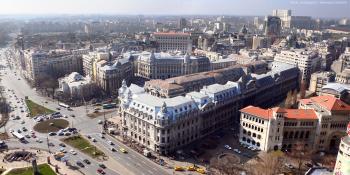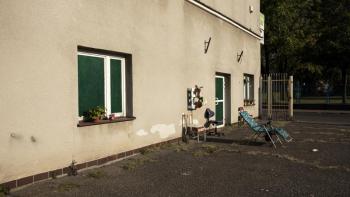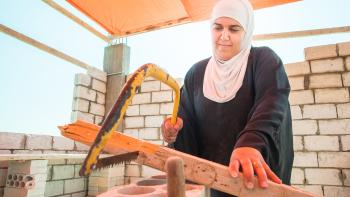
Housing Poverty in Romania: A New Housing Model
Did you know that an estimated five million people live in poverty in Romania? Of this total, 1.5 million are children.
Urgent repair is required on over 20% of the country’s housing stock. This is due to the very poor condition they are in. In winter, 12% of Romanians cannot keep their homes adequately warm.
Habitat for Humanity recently launched a pilot project which aims to find the most cost-effective housing model. The design of these homes is based on a winning model that was chosen out of 40 submitted proposals at the architectural competition, Home for Humanity, which the Hilti Foundation supported. There are six buildings already constructed.
Will this new housing model be sufficient to address poverty in Romania?
What is the New Housing Model?
At the moment, the project is a pilot. Six test units have been constructed within two stages.
Construction was accelerated last August with the assistance of volunteers. 70% to 80% of the buildings were created within five days. By the end of January 2022, they were completed.
The winning design from Home for Humanity had some clear advantages. Firstly, it had the lowest budget. There was also the simplicity of the invention as it was modular. It means it can be modified to suit the needs of the residents. It can have one to three modules to determine the size of the home.
The design also respected the core house concept. It means that the family who resides within it can expand that structure if they require additional space. When people get better jobs or access to more money, they can develop their homes on their own.
Lastly, the building can be built fast with volunteers. It was tested with helpers and found to be very efficient.
What Does the Core House Consist Of?
The core house includes a large and small unit, much like a duplex. There is a common wall that separates them. It makes the home more functional and efficient in terms of land and costs.
The small unit is roughly 34 square meters, and the larger one is approximately 50 square meters. In the smaller space, the kitchen and living room are one space. There is also one bedroom. So it can house a maximum of three people.
The larger unit is similar to a two-bedroom apartment. The living room is 18 square meters and coupled with the kitchen and bathroom. Each bedroom is roughly 16 square meters. It can house a family of four or five people.
Where Were the Units Built?
Two duplexes or four homes were built in a small village in the northeast part of Romania known as Poduri. Approximately 1500 people live in this area, and it is located in one of the poorest regions, not just in the country but in the European Union.
The other unit is located in the Kumpana village, which is a little bigger. There are roughly 6000 people who live here. It is in the Eastern part of Romania near the Black Sea.
80% of the construction was completed by 20 volunteers and took five days to finish. More than half of the assistants didn’t have construction experience and could still get the work done in this amount of time. After five days, some technical interior work such as electrical and thermal installations were conducted by specialists.
Will More Houses Be Created with This Design?
The next plan is to build over 200 homes in the coming years.
As this is a pilot project, there will be a review to see what lessons can be learned. Most parts are working. But there are some areas of improvement that can help make the design even better.
For example, one of the aspects that will get adjusted is simplifying the structure. This will result in even more cost efficiencies and make it faster to build. Solutions are already in place, and specialists have been engaged. There is also a need to increase the surface, particularly in the small unit. This will increase the cost, but the budget will balance out with the benefits of simplifying the process.
Stay Up to Date with the Project
Home means happiness, peace of mind, and family.
Projects like these can help reduce poverty in Europe and bring more people together across the region. If you want to learn more and support our work in Romania visit www.habitat.ro.



